Erin Driessen – 7 February, 2012
The idea of watching oneself play out is heightened by the sense of the digital in these works. With blocks of red, green, and white, the paper weavings resemble microchips. The black mats of videotape are pixilated screens. The evenness of the stacked reels and cassettes glued to the wall contrasts the used tape cases and plastic bits strewn in a pile on the floor.
The Christchurch earthquakes have been the subject of or context for several of the most recently reviewed exhibitions here on Eye Contact. Today adds another. Scott Flanagan is known for working through abstract ideas via meticulous methods, and a Duchampian flare for art historical allusion and found objects. In 867 Hours Underground, his first Dunedin show in nine years and his first solo NZ show in two, Flanagan weaves a more personal, emotional thread between idea and object.
The Upper and Darkside galleries of the Blue Oyster are full. There is a lot going on in metres and metres of videotape, stacked half-empty reels, video cassettes adhered to the wall, hand-made miniature catalogues (as much catalogues of self as of the work - “I like cigarettes,” “Loud people irritate me”), tapestries of shredded paper, collages, notes from friends, a video of Flanagan’s earth-quake destroyed Christchurch studio. A fullness constructed in an attempt to counter the loss of his home and studio, the events which brought the artist to Dunedin. A printed text on the wall reads:
“Man, what’s your exhibition about?”
“Loss.”
“Yeah. But, what does that mean?”
“I’m from Christchurch.”
“Oh … okay … right.”
There are no pseudonyms used; no Alan Lacan or Stan Long, two of the names the artist has adopted in the past. This is the real Scott Flanagan.
There is a note to the artist from friends:
“Scott - came at 2:15 and you weren’t here”.
A print on the wall reads, “You don’t get away ‘Scott’ free.”
“Why not? You have.”
Scott is absent but present in others; Scott is free - or is he? A loss of identity and subsequent struggle to reassert it. This exhibition is an honest, painful and playful, rough and beautiful expression of concepts of time, site and identity.
867 hours was the length of Flanagan’s summer residency at the Blue Oyster, where he worked 15 to 18-hour days in the gallery’s basement-like space from 23 December 2011 to 30 January 2012. At least 50 hours went into weaving videotape and thin strips of paper. Two days into the residency, Flanagan removed the two banisters from the ramp at the gallery’s entrance. Gallery director Jamie Hanton described it as a comment on the disfunction of function. Any visitor to the gallery who requires a ramp and/or a support banister, first also needs to navigate the reasonably steep and uneven concrete alleyway that leads to the gallery door.
I also read in this action a real consciousness of site and space, a playful subversion of the often passively-accepted authority of the gallery space and its layout. At the exhibition opening, only a couple of people took the opportunity upon entry to immediately traverse the area previously ‘blocked’ by the banisters. I myself did not even notice they were missing at first and auto-piloted my way into the gallery via the usual path.
The first works the viewer encounters beyond the stacked cassette reels at the entrance are three large square mats of woven video tape, what Flanagan has identified as his most ambitious work of this kind to date. Two cover each wall of the corner, and one lies on the ground. The two black wall weavings are perfectly flat and smooth and create a shimmering mirror effect.
The other wall of the alcove bears three sheets of cellophane, taken from bouquets of flowers which spoke of further loss. These sheets coincidentally echo shapes from Duchamp’s The Large Glass (The Bride Stripped Bare By Her Bachelors, Even). They create pockets or shallow holes in the space, and the by-chance shaping adds to the Surrealist allusion, evoking Man Ray and Joan Miró.
The mat on the floor is bordered by circles and circles of loose video tape, creating a circular black pool reminiscent of Narcissus or a wishing well (a visitor to the gallery pre-opening night, threw coins onto the mat in a chance formation). The two displaced banisters from the entrance have been painted yellow and green. They lie together and are entwined at one end that leans on a makeshift bed in which Flanagan took naps over the course of his residency. Two books by Chilean writer Roberto Bolaño, whose writing reportedly has a surrealist bent, sit in the pool and prop up the other end of the banisters.
Through processes (and there is great emphasis placed on process) of displacement, reflection and extended solitude, identities are merged and metamorphosised. The artist concerned with idea and methodical execution meets his other half who interrupts and throws objects across the floor. A tiny room off to the side and a lone black chair provide the viewer secluded platforms from which to negotiate this double-sided self.
Next to a wall label that reads, “The Loss,” Flanagan has hung a single photograph that shows his earthquake-ravaged Christchurch studio. Next to this, a film silently plays out shots of the broken space. Earthquake, freeze frame, aftermath. The smaller paper weavings under the heading, “Notes on Hysteria Episodes 32-43,” seem to bind together these shreds of time. Readable texts within them spout, “God is everywhere!” and “Wisdom of the Jedi Masters.”
Close to the paper weavings hang what Flanagan has labeled, “Reader’s Digest Condensed Drawings.” Made in the same way as Surrealist artist Max Ernst’s fine collages of small figures, buildings, landscapes and texts, Flanagan’s consist mostly of human figures. There are people within people, images that tell stories of how life intermittently contracts and extends, as we look out and look in.
The idea of watching oneself play out is heightened by the sense of the digital in these works. With blocks of red, green, and white, the paper weavings resemble microchips. The black mats of videotape are pixilated screens on which we see our basic, blurry reflections. The evenness of the stacked reels and cassettes glued to the wall contrasts the used tape cases and plastic bits strewn in a pile on the floor.
I don’t think Flanagan is commenting directly on our use of social media with his references to the digital, though it’s what comes to mind first when I think of people’s placement of themselves in a digitized world. A more interesting part of this is how we are placed and identified by others, and how much of their perception of us is generated in turn by our own choices around identity construction. This is a side-thought here, though. Flanagan has stated the inspiration for the show was the idea of new forms emerging from seemingly disparate media. Clearly, this idea translates to identity as well. Bits of oneself left behind, some taken, some thrown away; old and new. Old makes new.
Erin Driessen
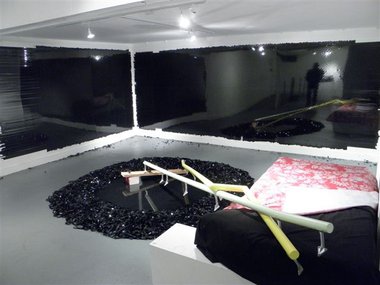
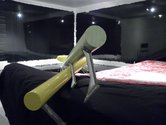
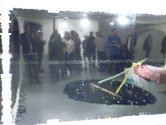
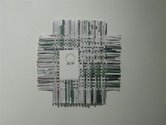
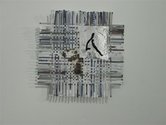

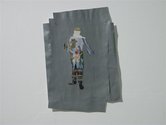
 Two Rooms presents a program of residencies and projects
Two Rooms presents a program of residencies and projects Advertising in this column
Advertising in this column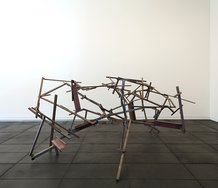
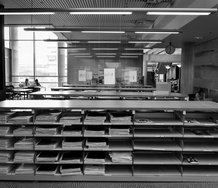
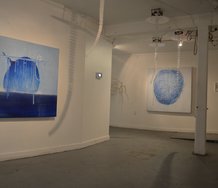
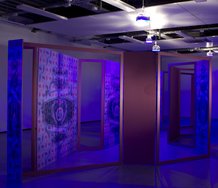
This Discussion has 0 comments.
Comment
Participate
Register to Participate.
Sign in
Sign in to an existing account.